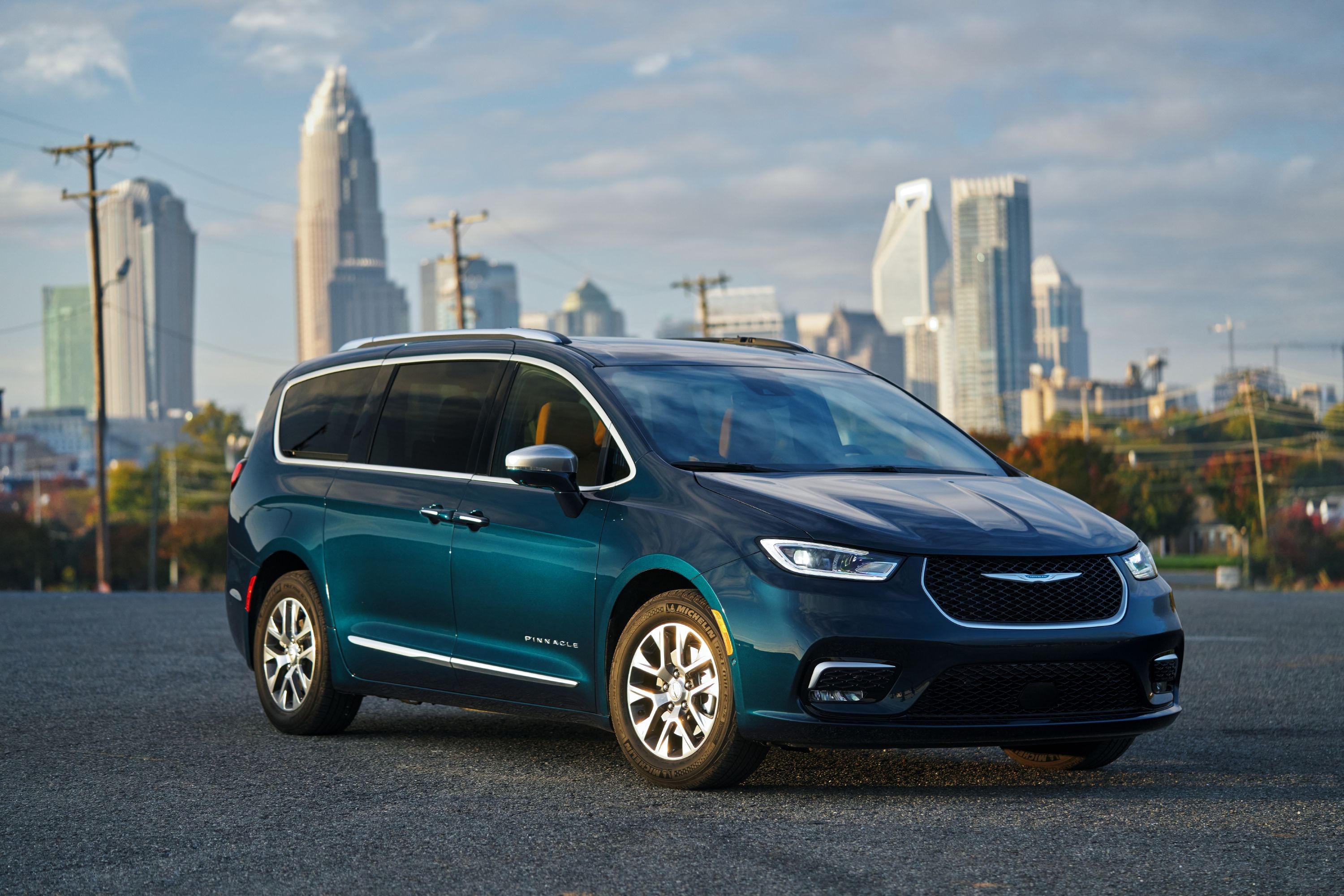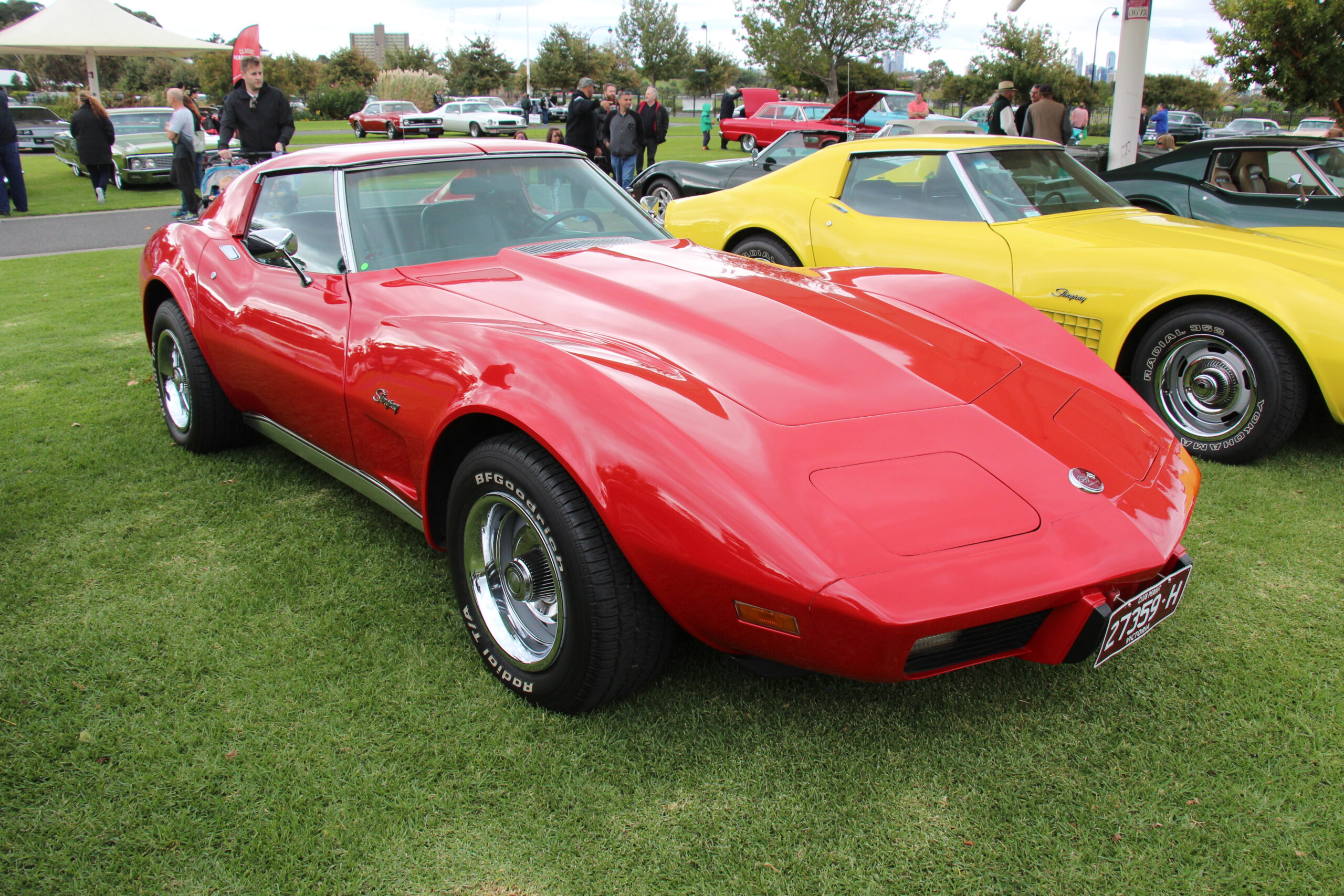
The Chevrolet Corvette has long been America’s answer to European sports cars, a fast, flashy, and proudly loud automotive icon that first hit the roads in 1953. For over seven decades, it has cemented its place in automotive history, inspiring a fervent community of drivers and collectors who passionately debate every nuance, from engine performance to tail light design. This deep-rooted legacy of speed and style makes the Corvette a perennial favorite, a true symbol of American engineering prowess.
Yet, the journey of an icon isn’t always smooth. While countless Corvette models have achieved legendary status, some have, unfortunately, missed the mark, proving to be more headache than horsepower for their owners. Whether due to mechanical flaws, design missteps, or the challenging regulatory environment of their era, certain model years simply didn’t live up to the revered Corvette badge. For anyone considering purchasing, restoring, or simply understanding the full breadth of Corvette history, recognizing these less-than-stellar offerings is crucial.
In this in-depth guide, we delve into the specific Corvette years that warrant careful consideration, or perhaps outright avoidance, explaining the precise reasons behind their problematic reputations. Our aim is to equip you with the expert insights needed to navigate the used Corvette market intelligently, ensuring that your pursuit of American sports car exhilaration leads to joy, not buyer’s remorse. We begin our exploration by examining some of the earliest models and transitional generations that proved particularly challenging.
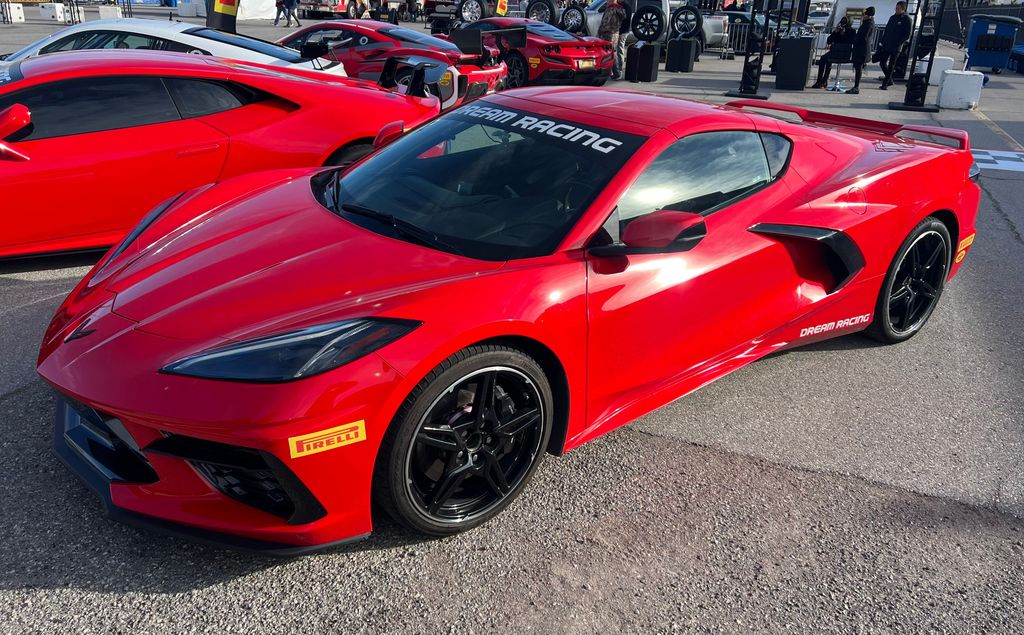
1. **1953 C1 Corvette: Historic, But Half-Baked**The very first Chevrolet Corvette, launched in 1953, holds an undeniable place in automotive history as the birth of an icon. Yet, beneath its sleek, groundbreaking fiberglass body, there was significant room for improvement, a fact acknowledged by both enthusiasts and initial sales figures. This inaugural model teetered on the brink of being a commercial failure right out of the gate, as its driving experience fell short of its striking appearance. It looked the part of a sports car, but critically, it didn’t quite drive like one, setting a cautious precedent for its early years.
A major point of contention was its woefully inadequate powertrain. Equipped with Chevrolet’s original “Blue Flame” straight-six engine, it produced a modest 150 horsepower, coupled with a 2-speed Powerglide automatic transmission. This output simply didn’t deliver the exhilarating performance consumers expected from America’s answer to European sports cars. Many prospective buyers and early owners wished for significantly more pedal, underscoring a fundamental mismatch between aspiration and execution.
Beyond the underpowered engine, the 1953 model suffered from other critical flaws. The use of repurposed sedan suspension components resulted in less than desirable ride quality, making the car feel more like a stiffly sprung family sedan than a nimble sports car. Compounding these issues was a reputation for rough build quality from early fiberglass construction. These factors combined to create a milestone car that, while historically significant, was not particularly fun or refined to drive.
Car Model Information: 1957 Chevrolet Corvette Base
Name: Chevrolet Corvette
Caption: 2021 Chevrolet Corvette C8
Manufacturer: Chevrolet
Production: 1953–present
ModelYears: bulleted list
Assembly: bulleted list
Class: Sports car
BodyStyle: coupé
Layout: Front-engine, rear-wheel-drive layout,Rear mid-engine, rear-wheel-drive layout
Categories: 1950s cars, 1960s cars, 1970s cars, 1980s cars, 1990s cars
Summary: The Chevrolet Corvette is a line of American two-door, two-seater sports cars manufactured and marketed by General Motors under the Chevrolet marque since 1953. Throughout eight generations, indicated sequentially as C1 to C8, the Corvette is noted for its performance, distinctive styling, lightweight fiberglass or composite bodywork, and competitive pricing. The Corvette has had domestic mass-produced two-seater competitors fielded by American Motors, Ford, and Chrysler; it is the only one continuously produced by a United States auto manufacturer. It serves as Chevrolet’s halo car.
In 1953, GM executives accepted a suggestion by Myron Scott, then the assistant director of the Public Relations department, to name the company’s new sports car after the corvette, a small, maneuverable warship. Initially, a relatively modest, lightweight 6‑cylinder convertible, subsequent introductions of V8 engines, competitive chassis innovations, and rear mid-engined layout have gradually moved the Corvette upmarket into the supercar class. In 1963, the second generation was introduced in coupe and convertible styles. The first three Corvette generations (1953–1982) employed body-on-frame construction, and since the C4 generation, introduced in 1983 as an early 1984 model, Corvettes have used GM’s unibody Y‑body platform. All Corvettes used front mid-engine configuration for seven generations, through 2019, and transitioned to a rear mid-engined layout with the C8 generation.
Initially manufactured in Flint, Michigan, and St. Louis, Missouri, the Corvette has been produced in Bowling Green, Kentucky, since 1981, which is also the location of the National Corvette Museum. The Corvette has become widely known as “America’s Sports Car.” Automotive News wrote that after being featured in the early 1960s television show Route 66, “the Corvette became synonymous with freedom and adventure,” ultimately becoming both “the most successful concept car in history and the most popular sports car in history.”
Get more information about: Chevrolet Corvette
Buying a high-performing used car >>>
Brand: Chevrolet Model: Corvette
Price: $59,991 Mileage: 39,412 mi.
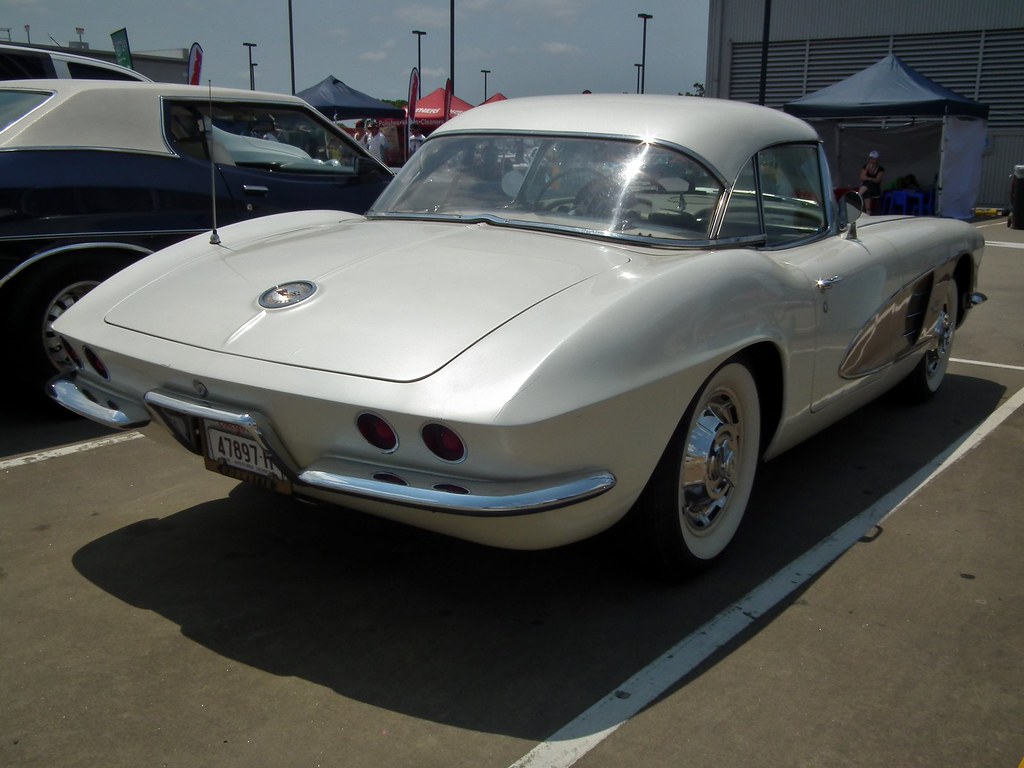
2. **1954 C1 Corvette: Essentially the Same Shortcomings**Following closely on the heels of its inaugural year, the 1954 C1 Corvette regrettably replicated many of its predecessor’s fundamental shortcomings, preventing any significant leap forward in performance or quality. This model year continued to challenge Chevrolet, struggling to truly ignite consumer enthusiasm despite its continued visual appeal. The promise of a true American sports car remained largely unfulfilled, as initial criticisms carried over into the second year of production with little meaningful address.
Mechanically, the 1954 Corvette was nearly identical, retaining the familiar “Blue Flame” straight-six engine. This meant the same lackluster 150 horsepower output, a significant deterrent for performance-minded buyers. As before, this powerplant simply didn’t “light a fire underneath the car,” failing to deliver the spirited driving experience expected from the Corvette nameplate. The absence of a more potent engine option left many questioning the car’s athletic credentials.
Furthermore, build quality and ride characteristics remained problematic. Owners continued to experience poor ride quality, attributable to persistent sedan-quality suspension components, ill-suited for a sports car. Fit and finish issues from early fiberglass construction also plagued the Corvette, detracting from its premium image. A substantial change was desperately needed to secure the Corvette’s future, arriving just in time with the 265 cubic-inch V8 in 1955. Without it, the Corvette’s survival beyond its initial two problematic years would have been highly unlikely.
Car Model Information: 2025 Genesis GV80 3.5T
Caption: 1954 Corvette
Name: Chevrolet Corvette (C1)
Manufacturer: Chevrolet
Production: June 1953–July 1962
ModelYears: 1953–1962
Platform: Series E2934 (1953–1957),Series J800 (1958-1959),Series 0800 (1960-1962)
Assembly: Flint Truck Assembly,St. Louis Truck Assembly
Designer: Harley Earl
Engine: {{convert,235,CID,L,1,abbr=on,Chevrolet Stovebolt engine#235,Straight-6
Abbr: Chevrolet small-block engine (first- and second-generation)#327
Transmission: Powerglide,manual transmission,4-speed manual
Wheelbase: cvt
Length: {{cvt,167.3,in,mm,0
Width: {{cvt,69.8,in,mm,0
Height: {{cvt,51.5,in,mm,0
Weight: {{cvt,2886,lb,kg,0
Related: Carrozzeria Scaglietti
Successor: Chevrolet Corvette (C2)
Class: Sports car
BodyStyle: Convertible (car)
Chassis: Body-on-frame
Layout: FR layout
Categories: 1960s cars, 24 Hours of Le Mans race cars, All articles covered by WikiProject Wikify, All articles with dead external links, All articles with unsourced statements
Summary: The Chevrolet Corvette (C1) is the first generation of the Corvette sports car produced by Chevrolet. It was introduced late in the 1953 model year and produced through 1962. This generation is commonly called the “solid-axle” generation, as an independent rear suspension did not appear until the 1963 Sting Ray.
The Corvette was rushed into production for its debut model year to capitalize on the enthusiastic public reaction to the concept vehicle. However, expectations for the new model were largely unfulfilled. Reviews were mixed, and sales fell far short of expectations through the car’s early years. The program was nearly canceled by General Motors, but decided to make necessary improvements because Ford was developing a two-seater that became the Thunderbird.
Get more information about: Chevrolet Corvette (C1)
Buying a high-performing used car >>>
Brand: Chevrolet Model: C1 Corvette
Price: $63,683 Mileage: 5,413 mi.

3. **1958 C1 Corvette: Chrome Overload and Styling Missteps**By 1958, the Corvette had moved beyond its initial powertrain struggles, but faced a new aesthetic challenge. This model year is often lamented for its dramatic and polarizing design, particularly its overwhelming embrace of chrome. While some might find the 1958 Corvette visually appealing, many others find its exterior styling excessive, even inducing a “profuse headache” with its sheer quantity of shiny adornments.
This design direction was largely influenced by Harley Earl, whose illustrious career with GM’s design department was nearing its conclusion. He envisioned his final Corvette project as a grand statement of “shiny splendor,” a noble theory that, in execution, became rather overwhelming. The 1958 Corvette featured an extensive list of chrome appendages. Sizable chrome wrap-around bumpers dominated both the front and rear, complemented by an undeniably “over-the-top chrome grill.”
The chrome obsession didn’t stop there. Distinctive chrome strips ran rearward down the fenders from the headlights, accentuating the flamboyant nature. Then came the controversial decision to incorporate a four-headlight design, a stylistic choice that did not receive much fanfare. To complete the theme, these new headlights were set within bezels that, predictably, boasted yet another generous coating of chrome. This profusion of brightwork, while an expression of its era, made the 1958 Corvette a divisive model.
Car Model Information: 1957 Chevrolet Corvette Base
Name: Chevrolet Corvette
Caption: 2021 Chevrolet Corvette C8
Manufacturer: Chevrolet
Production: 1953–present
ModelYears: bulleted list
Assembly: bulleted list
Class: Sports car
BodyStyle: coupé
Layout: Front-engine, rear-wheel-drive layout,Rear mid-engine, rear-wheel-drive layout
Categories: 1950s cars, 1960s cars, 1970s cars, 1980s cars, 1990s cars
Summary: The Chevrolet Corvette is a line of American two-door, two-seater sports cars manufactured and marketed by General Motors under the Chevrolet marque since 1953. Throughout eight generations, indicated sequentially as C1 to C8, the Corvette is noted for its performance, distinctive styling, lightweight fiberglass or composite bodywork, and competitive pricing. The Corvette has had domestic mass-produced two-seater competitors fielded by American Motors, Ford, and Chrysler; it is the only one continuously produced by a United States auto manufacturer. It serves as Chevrolet’s halo car.
In 1953, GM executives accepted a suggestion by Myron Scott, then the assistant director of the Public Relations department, to name the company’s new sports car after the corvette, a small, maneuverable warship. Initially, a relatively modest, lightweight 6‑cylinder convertible, subsequent introductions of V8 engines, competitive chassis innovations, and rear mid-engined layout have gradually moved the Corvette upmarket into the supercar class. In 1963, the second generation was introduced in coupe and convertible styles. The first three Corvette generations (1953–1982) employed body-on-frame construction, and since the C4 generation, introduced in 1983 as an early 1984 model, Corvettes have used GM’s unibody Y‑body platform. All Corvettes used front mid-engine configuration for seven generations, through 2019, and transitioned to a rear mid-engined layout with the C8 generation.
Initially manufactured in Flint, Michigan, and St. Louis, Missouri, the Corvette has been produced in Bowling Green, Kentucky, since 1981, which is also the location of the National Corvette Museum. The Corvette has become widely known as “America’s Sports Car.” Automotive News wrote that after being featured in the early 1960s television show Route 66, “the Corvette became synonymous with freedom and adventure,” ultimately becoming both “the most successful concept car in history and the most popular sports car in history.”
Get more information about: Chevrolet Corvette
Buying a high-performing used car >>>
Brand: Chevrolet Model: Corvette
Price: $59,991 Mileage: 39,412 mi.

4. **1975 Base Model Corvette: Choked by Emissions**The mid-1970s marked a particularly challenging period for high-performance vehicles, and the 1975 Corvette base model stands as a poignant example. This year is an “unfortunate story of the onset of stringent emissions standards choking the life out of a true icon car.” For many Corvette faithful, witnessing the transition from 1974 to 1975 was “quite painful to watch,” as the regulatory environment began to severely compromise the very essence of American muscle.
The most significant impact was felt in the powertrain. The glorious big-block engine offerings of the past were entirely eliminated, a casualty of new environmental mandates. Furthermore, the Corvette’s venerable small-block powerplant was “nearly stifled into non-existence” in its efforts to meet demanding emission standards. This widespread curtailment of power marked a stark departure from the Corvette’s historical emphasis on raw, unadulterated performance.
Specifically, the ZQ3 engine underwent a critical redesign. This involved a compression reduction of half a point and mandatory outfitting with catalytic conversion technology. The cumulative effect was a drastic reduction to a “measly 165 HP” output. This figure is striking, considering the original “Blue Flame” engine from 1953 produced approximately 150 HP. To achieve only a 15 HP gain over two decades, while being significantly heavier, highlighted how severely the 1975 base model was compromised.
Car Model Information: 1957 Chevrolet Corvette Base
Name: Chevrolet Corvette
Caption: 2021 Chevrolet Corvette C8
Manufacturer: Chevrolet
Production: 1953–present
ModelYears: bulleted list
Assembly: bulleted list
Class: Sports car
BodyStyle: coupé
Layout: Front-engine, rear-wheel-drive layout,Rear mid-engine, rear-wheel-drive layout
Categories: 1950s cars, 1960s cars, 1970s cars, 1980s cars, 1990s cars
Summary: The Chevrolet Corvette is a line of American two-door, two-seater sports cars manufactured and marketed by General Motors under the Chevrolet marque since 1953. Throughout eight generations, indicated sequentially as C1 to C8, the Corvette is noted for its performance, distinctive styling, lightweight fiberglass or composite bodywork, and competitive pricing. The Corvette has had domestic mass-produced two-seater competitors fielded by American Motors, Ford, and Chrysler; it is the only one continuously produced by a United States auto manufacturer. It serves as Chevrolet’s halo car.
In 1953, GM executives accepted a suggestion by Myron Scott, then the assistant director of the Public Relations department, to name the company’s new sports car after the corvette, a small, maneuverable warship. Initially, a relatively modest, lightweight 6‑cylinder convertible, subsequent introductions of V8 engines, competitive chassis innovations, and rear mid-engined layout have gradually moved the Corvette upmarket into the supercar class. In 1963, the second generation was introduced in coupe and convertible styles. The first three Corvette generations (1953–1982) employed body-on-frame construction, and since the C4 generation, introduced in 1983 as an early 1984 model, Corvettes have used GM’s unibody Y‑body platform. All Corvettes used front mid-engine configuration for seven generations, through 2019, and transitioned to a rear mid-engined layout with the C8 generation.
Initially manufactured in Flint, Michigan, and St. Louis, Missouri, the Corvette has been produced in Bowling Green, Kentucky, since 1981, which is also the location of the National Corvette Museum. The Corvette has become widely known as “America’s Sports Car.” Automotive News wrote that after being featured in the early 1960s television show Route 66, “the Corvette became synonymous with freedom and adventure,” ultimately becoming both “the most successful concept car in history and the most popular sports car in history.”
Get more information about: Chevrolet Corvette
Buying a high-performing used car >>>
Brand: Chevrolet Model: Corvette
Price: $59,991 Mileage: 39,412 mi.

5. **1979 L48 Corvette: Best Seller, But Underwhelming**The 1979 L48 Corvette holds the paradoxical distinction of being the best-selling Corvette ever, a fact that might mislead prospective buyers. Its immense sales were not a testament to its quality or performance; rather, it was “not because it was good,” but likely due to market conditions. This model year, once again, serves as “another prime example of just how negatively a performance-minded vehicle can be affected when emission standards are suddenly thrown into the mix.”
Performance-wise, the 1979 L48 was a far cry from its more muscular predecessors. The era of “400 plus horsepower offerings of the 1960s” was a distant memory. In their place stood the L48 engine, delivering a “mind-numbingly sub-par 195 HP output.” This power figure, coupled with added vehicle weight and restrictive emission controls, made the car feel “slow and uninspiring” to drive. For enthusiasts, this diluted performance was a significant disappointment, diminishing its sports car credentials.
Beyond underwhelming performance, the 1979 Corvette also suffered from issues hinting at manufacturer neglect. It was “often seen as a neglected year model,” largely because GM’s teams were intensely focused on perfecting the brand’s next-generation offering. Owners frequently complained about the “outdated and less than eye-appealing interior,” contributing to a car that felt behind the times. Furthermore, “rust around the windshield frame and hinge pillars is common,” indicating structural and build quality issues leading to costly repairs.
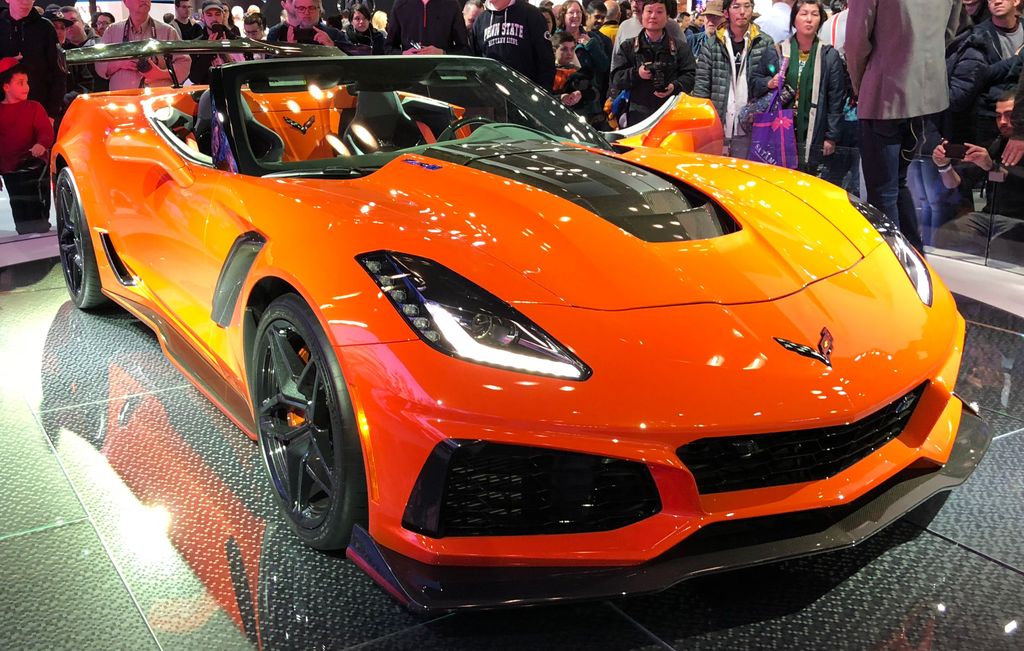
6. **1980 California 305 Corvette: Built for Smog Rules**The 1980 model year brought an even more specialized set of problems, particularly for buyers in California, illustrating extreme measures taken for environmental regulations. The context highlights this with exasperation: “Oh, the poor 1980 Corvette: as if emissions standards didn’t hit the country’s automotive industry hard enough, the state of California decided not to leave well enough alone.” This era forced manufacturers into compromises significantly diluting performance.
To meet California’s strict emissions laws, the standard 5.7L/350 cubic-inch, four-barrel powerplant was unceremoniously eliminated for Corvettes sold in the state. In its place, buyers received a “drastically underwhelming 5L/305 cubic-inch alternative.” This smaller displacement engine was a severe downgrade, cranking out a “mere 180 HP.” Such a power output, far below expectations, resulted in a “less than noteworthy driving experience,” transforming the potent sports car into a shadow of its former self.
As if the engine downgrade wasn’t enough, transmission options also suffered for California-bound models. The engaging 4-speed manual transmission was no longer available for these “California based emissions Corvettes.” Instead, it was replaced with a 3-speed turbo-hydromatic automatic. This combination of an underpowered engine and simplistic automatic transmission firmly cemented the 1980 California 305 Corvette’s place as a “collector’s footnote, mostly for being underwhelming.”
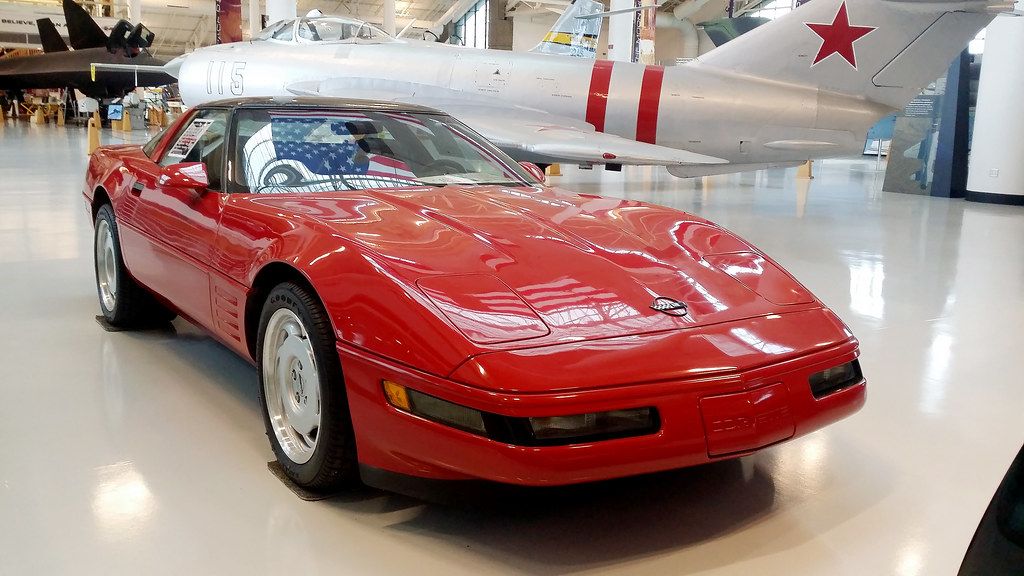
7. **1982 C3 Corvette: Final Year Fatigue and Flawed Tech**The 1982 C3 Corvette represents the twilight of the third-generation, a period characterized by “final year fatigue.” By this point, “the C3 had more than ran its course,” and Chevrolet’s teams were intensely focused on the eagerly anticipated C4 generation. This forward-looking mindset meant that “the continued development of the C3 wasn’t exactly at the top of anyone’s priority list,” leading to “relatively uninspired cars” emerging from the final C3 years.
Compounding the lack of developmental focus, GM made a critical decision to use the 1982 model as a testing ground for new, unproven technology. It was deemed worse than mere neglect to use the C3 “as a guinea pig to test out GM’s new Cross-Fire Injection system.” This “overhyped” fuel injection system, along with a new 700-R4 transmission, both “proved unreliable,” quickly becoming sources of owner frustration. These systems were prone to issues, leading to frequent repairs and inconsistent performance.
Furthermore, the 1982 model suffered from “outdated tech” and “recurring rust issues,” common problems for the aging C3 platform. In a significant blow to driving enthusiasts, GM also “discontinu[ed] the car’s manual transmission option” for this final C3 year. This blend of unreliable new technology, persistent old problems, and the removal of a manual gearbox, resulted in a “less than overwhelming 200 HP showing,” ensuring the 1982 C3 was “not a strong sendoff.”
Car Model Information: 2025 Genesis GV80 3.5T
Name: Chevrolet Corvette (C3)
Caption: 1973 Chevrolet Corvette Stingray
Manufacturer: Chevrolet
Aka: Chevrolet Corvette Stingray,(1968–76)
Production: August 1967 – October 1982
ModelYears: 1968–82
Platform: General Motors Z platform
Assembly: St. Louis Truck Assembly,Bowling Green Assembly Plant
Predecessor: Chevrolet Corvette (C2)
Successor: Chevrolet Corvette (C4)
Class: Sports car
BodyStyle: Convertible (car),coupé
Layout: Mid-engine design
Engine: {{cvt,305,cuin,L,1,Chevrolet small-block engine (first- and second-generation)#LG4,V8 engine
Transmission: manual transmission,manual transmission,Turbo-Hydramatic,Automatic transmission
Wheelbase: cvt
Length: {{cvt,182.1,in,mm,0
Width: {{cvt,69.2,in,mm,0
Height: {{cvt,47.8,in,mm,0
Weight: cvt
Designer: GM & Chevrolet design staff,Zora Arkus-Duntov,Bill Mitchell (designer)
Categories: 1970s cars, 1980s cars, All articles with unsourced statements, Articles with short description, Articles with unsourced statements from April 2024
Summary: The Chevrolet Corvette (C3) is the third generation of the Corvette sports car that was produced from 1967 until 1982 by Chevrolet for the 1968 to 1982 model years. Engines and chassis components were mostly carried over from the previous generation, but the body and interior were new. It set new sales records with 53,807 produced for the 1979 model year. The C3 was the second Corvette to carry the Stingray name, though only for the 1969–76 model years. This time it was a single word as opposed to Sting Ray as used for the 1963–67 C2 generation. The name was then retired until 2014 when it returned with the release of the C7.
The most expensive Corvette C3 to sell in history was a 1969 L88 Lightweight, one of only four lightweight L88s to be produced. It was sold by Barrett-Jackson in January 2014 for $2,860,000 (£1,728,941).
Get more information about: Chevrolet Corvette (C3)
Buying a high-performing used car >>>
Brand: Chevrolet Model: C3 Corvette
Price: $63,683 Mileage: 5,413 mi.
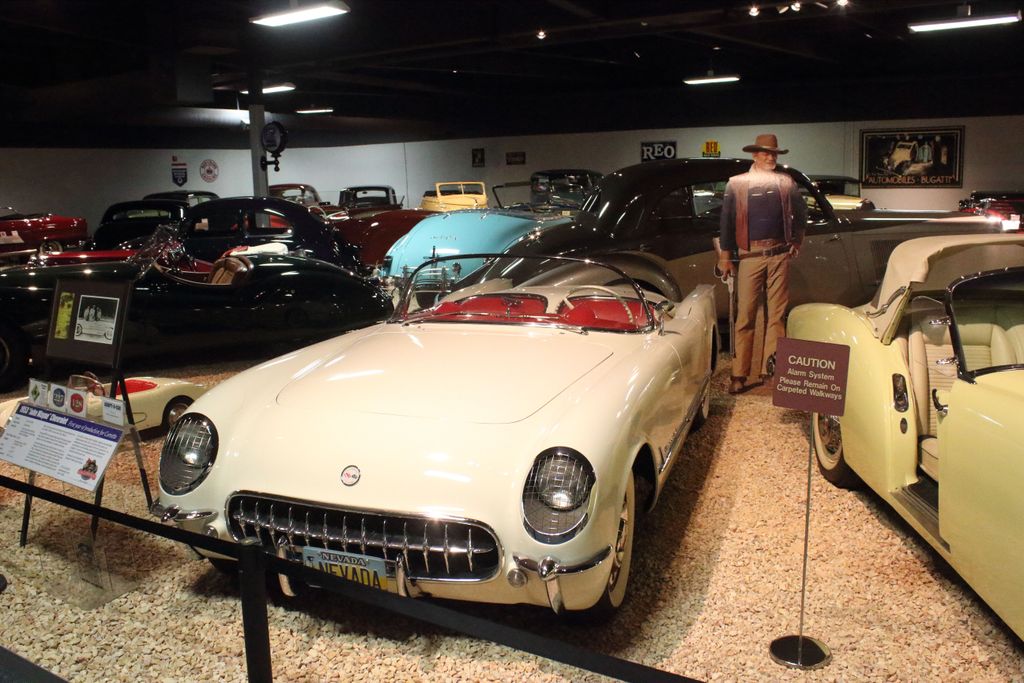
8. **1988 Commemorative Edition Corvette: The White Overload**While many problematic Corvettes are defined by mechanical or performance issues, some find their way onto the “avoid” list due to questionable aesthetic choices. The 1988 Commemorative Edition Corvette is a prime example, suffering from an “intense overload of the color white.” Drawing a parallel to the “disdain associated with the off-putting effects of chrome overload that is often associated with the 1958 Corvette,” this special edition demonstrated that too much of a single color can detract significantly.
The design concept for the 1988 Commemorative Edition appeared as a singular, monochromatic vision permeating nearly every visible aspect. It wasn’t merely the car’s body that featured this dominant white color scheme; rather, it extended to “almost anywhere on the vehicle that you could think to look.” This all-encompassing approach created a stark statement, which, for many, lacked the visual balance and sophistication typically associated with a premium sports car.
A detailed examination confirms this dedication to the single hue. The exterior boasted crisp “white paint.” Inside, the theme continued with matching “white upholstery,” “white door panels,” and even a “white steering wheel.” To complete the palette, “the rims were painted white as well,” creating an almost uniform, unbroken expanse. This design choice, while certainly commemorative, often struck observers as overwhelming and ultimately contributed to its designation as a less desirable model.
Continuing our journey through the Corvette’s often-tumultuous past, we now turn our attention to additional models that proved challenging for owners. This section delves into how the pursuit of modernization, the pressures of evolving emission standards, and occasional lapses in quality control throughout later generations impacted the reliability and desirability of these iconic vehicles. We’ll also provide crucial expert advice to guide smarter buying decisions, ensuring enthusiasts can navigate the used Corvette market with confidence.
Car Model Information: 2025 Chevrolet Corvette Stingray w/3LT
Name: Chevrolet Corvette
Caption: 2021 Chevrolet Corvette C8
Manufacturer: Chevrolet
Production: 1953–present
ModelYears: bulleted list
Assembly: bulleted list
Class: Sports car
BodyStyle: coupé
Layout: Front-engine, rear-wheel-drive layout,Rear mid-engine, rear-wheel-drive layout
Categories: 1950s cars, 1960s cars, 1970s cars, 1980s cars, 1990s cars
Summary: The Chevrolet Corvette is a line of American two-door, two-seater sports cars manufactured and marketed by General Motors under the Chevrolet marque since 1953. Throughout eight generations, indicated sequentially as C1 to C8, the Corvette is noted for its performance, distinctive styling, lightweight fiberglass or composite bodywork, and competitive pricing. The Corvette has had domestic mass-produced two-seater competitors fielded by American Motors, Ford, and Chrysler; it is the only one continuously produced by a United States auto manufacturer. It serves as Chevrolet’s halo car.
In 1953, GM executives accepted a suggestion by Myron Scott, then the assistant director of the Public Relations department, to name the company’s new sports car after the corvette, a small, maneuverable warship. Initially, a relatively modest, lightweight 6‑cylinder convertible, subsequent introductions of V8 engines, competitive chassis innovations, and rear mid-engined layout have gradually moved the Corvette upmarket into the supercar class. In 1963, the second generation was introduced in coupe and convertible styles. The first three Corvette generations (1953–1982) employed body-on-frame construction, and since the C4 generation, introduced in 1983 as an early 1984 model, Corvettes have used GM’s unibody Y‑body platform. All Corvettes used front mid-engine configuration for seven generations, through 2019, and transitioned to a rear mid-engined layout with the C8 generation.
Initially manufactured in Flint, Michigan, and St. Louis, Missouri, the Corvette has been produced in Bowling Green, Kentucky, since 1981, which is also the location of the National Corvette Museum. The Corvette has become widely known as “America’s Sports Car.” Automotive News wrote that after being featured in the early 1960s television show Route 66, “the Corvette became synonymous with freedom and adventure,” ultimately becoming both “the most successful concept car in history and the most popular sports car in history.”
Get more information about: Chevrolet Corvette
Buying a high-performing used car >>>
Brand: Chevrolet Model: Corvette
Price: $92,990 Mileage: 3,779 mi.
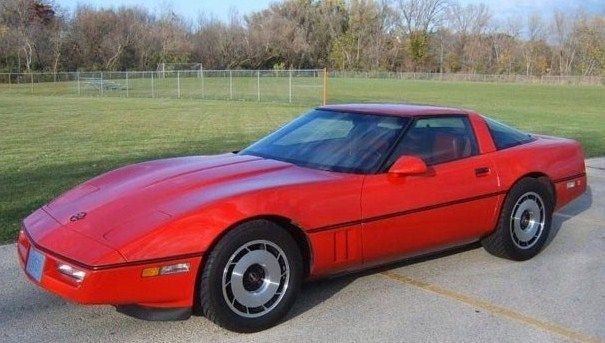
9. **1984 Corvette (C4): All Style, No Polish**The highly anticipated 1984 Corvette marked the dawn of the C4 generation, a complete redesign that promised a new era of performance and technology. Yet, for many enthusiasts, the reality fell short of the hype. Consumers were quick to criticize the C4’s departure from traditional styling, particularly its ‘lack of defined body lines,’ which alienated some loyalists accustomed to the C3’s voluptuous curves. While visually fresh, its aggressive stance masked a host of underlying issues that would define its problematic reputation.
A major technical misstep was the re-introduction of the Cross-Fire Fuel Injection system. This technology, intended to improve efficiency, proved to be a frequent source of headaches for owners. Reports of ‘downtime for repairs was frequent’ due to the system’s unreliability. This often led to inconsistent performance, engine misfires, and rough idling, transforming what should have been an exhilarating driving experience into a constant battle against mechanical glitches. The complexities of diagnosing and fixing these early electronic issues often meant expensive and prolonged visits to the mechanic.
Furthermore, the 1984 model was notorious for its ‘poor ride characteristics.’ While the new chassis aimed for improved handling, the resulting suspension setup was excessively stiff. Many owners stated that there was ‘little enjoyment to be had when driving their 1984 Corvette on a day-to-day basis,’ especially on anything other than perfectly smooth surfaces. Compounding these comfort issues were frequent electrical problems, including ‘malfunctioning digital dashboards’ and unreliable control modules, making the 1984 C4 a model that, despite its stylistic ambition, lacked the refinement and dependability expected of a flagship sports car.
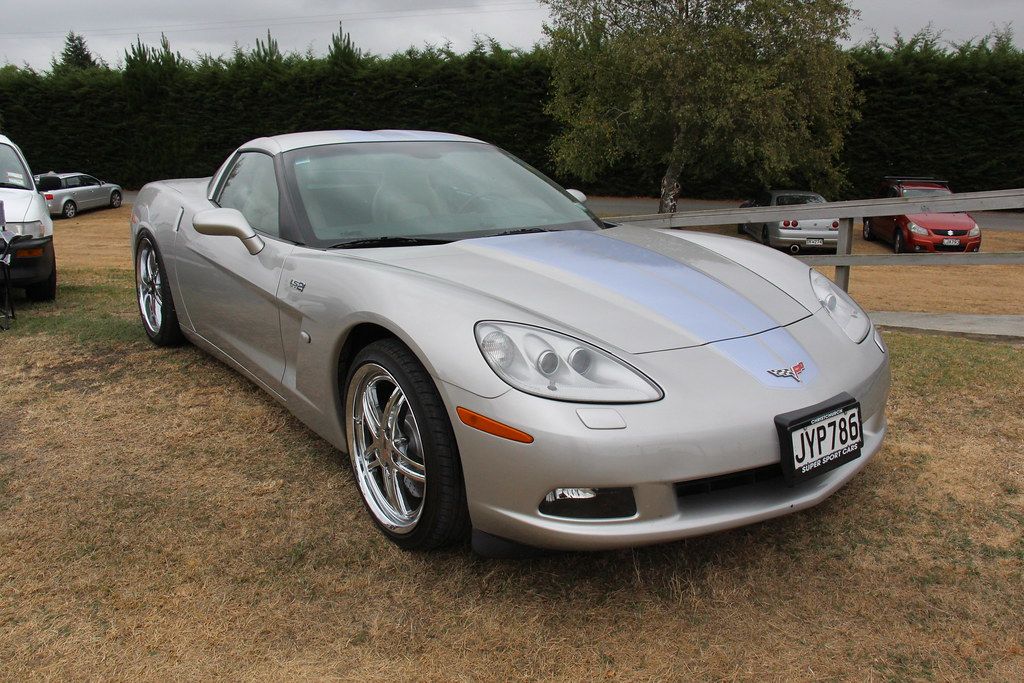
10. **1987 Callaway Twin Turbo Corvette: Performance at a Perilous Price**While the allure of a twin-turbocharged Corvette in 1987 was undeniable, promising exhilarating performance, this particular model often led to significant buyer’s remorse. Crafted by Callaway Engineering, this factory-authorized upgrade delivered impressive power but at a profound cost to long-term reliability. The sheer complexity and stresses introduced by the twin-turbo setup made it a precarious proposition, frequently teetering on the edge of mechanical failure.
The core issue lay in the system’s inherent fragility. The twin-turbo configuration, while potent, was ‘extremely failure-prone’ even under standard operating conditions. Owners often reported that the system ‘always seemed as if on the verge of failure,’ creating a constant state of anxiety and uncertainty about the car’s longevity. This meant that the thrill of boosted performance was frequently overshadowed by the looming threat of a breakdown.
Beyond the turbos themselves, the increased output generated by the Callaway package ‘strained nearly every component within the engine bay and beyond.’ From the engine block to the drivetrain, the additional power pushed original components past their design limits. With the Callaway Twin-Turbo Corvette, it ‘wasn’t a matter of if a component would fail; it was a question of when,’ making it a high-risk investment for any enthusiast seeking consistent, trouble-free performance.
Car Model Information: 2025 Genesis GV80 3.5T
Name: Callaway Cars Inc.
Type: Private
Foundation: 1977
Founder: Reeves Callaway
LocationCity: Old Lyme, Connecticut
LocationCountry: United States
KeyPeople: Reeves Callaway, Founder Peter Callaway, General Manager Michael Zoner, Managing Director Patrick Hodgins, Chief Engineer Scott Rawling, Engineering Group Manager
Industry: Specialty vehicle and automotive products manufacturer
Owner: Reeves Callaway
Categories: 24 Hours of Le Mans teams, ADAC GT Masters teams, All articles with dead external links, All articles with unsourced statements, All articles with vague or ambiguous time
Summary: Callaway Cars Inc. is an American specialty vehicle manufacturer and engineering company that designs, develops, and manufactures high-performance product packages for cars, pickup trucks, and SUVs. They specialize in Corvettes and GM vehicles. New GM vehicles are delivered to Callaway facilities where these special packages and components are installed. Then the vehicles are delivered to GM new car dealers where they are sold to retail customers, branded as Callaway. Callaway Cars is one of four core Callaway companies, including Callaway Engineering, Callaway Carbon and Callaway Competition.
Get more information about: Callaway Cars
Buying a high-performing used car >>>
Brand: Corvette Model: Twin Turbo
Price: $63,683 Mileage: 5,413 mi.
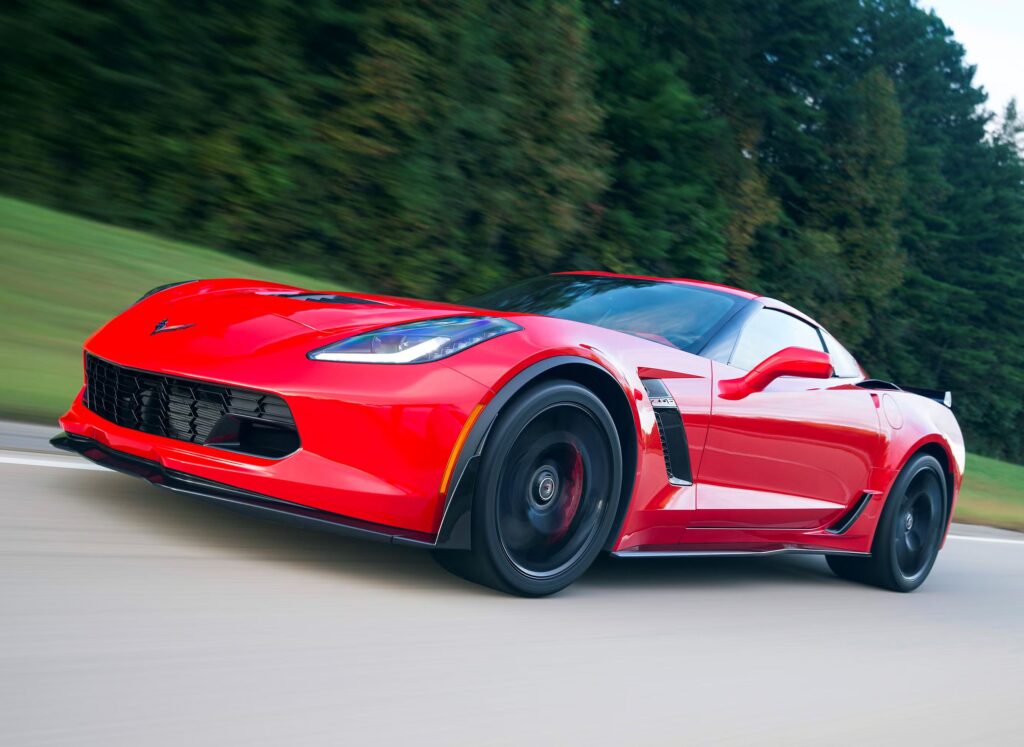
11. **1997 Corvette C5: Strong Start, Rough Edges**The 1997 Corvette, launching the C5 generation, represented a monumental leap forward in design and engineering. It introduced an entirely new platform, bringing significant improvements in performance, handling, and structural rigidity. However, as with many first-year redesigns, this foundational change was accompanied by a plethora of early production ‘bugs’ and ‘rough edges’ that would frustrate early adopters. The ambition of the new architecture, while ultimately successful, came with initial growing pains.
Among the more prominent issues were critical failures within the electronic systems. The Electronic Brake Control Module (EBCM) units, vital for modern braking and traction control, were ‘prone to failure,’ leading to costly repairs and compromised safety systems. This advanced component, while innovative, proved to be a weak link in the new C5’s electronic architecture, often failing unexpectedly and requiring specialized diagnostic attention.
Furthermore, the vehicle suffered from persistent issues with its steering column lock, which frequently ‘jammed,’ preventing the car from starting or even driving. This recurring problem became a significant inconvenience, highlighting initial quality control oversights. Owners also reported that ‘interior quality lagged’ behind expectations, with materials and fit-and-finish not quite matching the car’s otherwise impressive capabilities, detracting from the overall premium feel of the C5’s debut.
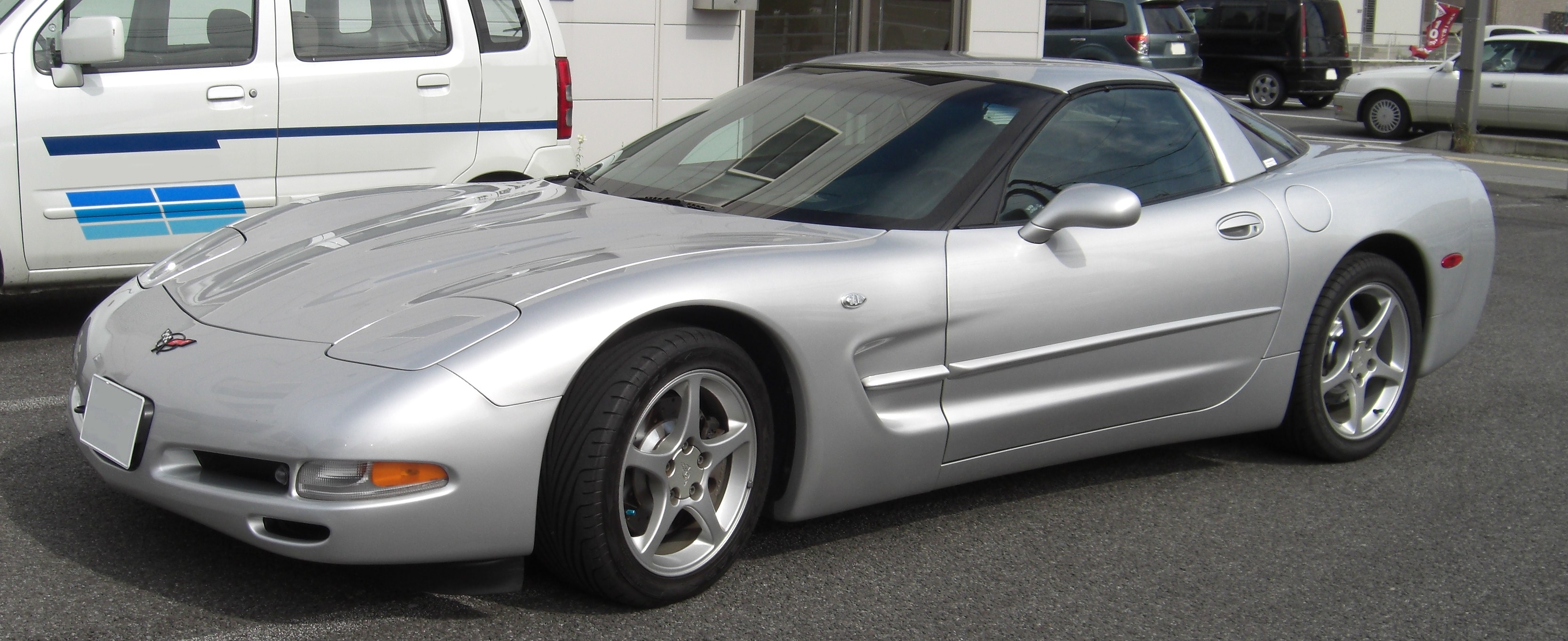
12. **1998 Corvette C5: Bugs Not Fully Squashed**Following the 1997 model, the 1998 Corvette C5 aimed to rectify some of its predecessor’s teething problems, yet it continued to suffer from a range of persistent reliability issues. While some initial complaints were addressed, this model year demonstrated that Chevrolet hadn’t entirely ‘squashed’ all the ‘bugs’ from the new C5 platform. The second year of a major redesign often reveals deeper systemic issues that require more than quick fixes.
Electrical problems remained a significant concern for 1998 C5 owners, indicating a lingering vulnerability in the car’s wiring and componentry. Common complaints included failing ‘Hazard switches,’ erratic ‘fuel gauges glitched,’ and the frustrating ‘steering lock continued to be a pain,’ echoing issues from the previous year. These electrical gremlins often led to unexpected malfunctions and complicated diagnostic efforts, making ownership less straightforward than anticipated.
Adding to these electrical woes, the 1998 model also suffered from ‘Quality Control Problems,’ manifesting in minor fit-and-finish issues and more serious ‘Fuel System Failures.’ Instances of fuel pumps failing were not uncommon, leading to potential engine stalling or reduced performance. Even more concerning, the context notes that ‘some later Z06 engines had valve spring problems,’ a critical mechanical flaw pointing to deeper manufacturing inconsistencies within the C5 lineage, even for its high-performance variants.
Car Model Information: 2025 Genesis GV80 3.5T
Name: Chevrolet Corvette (C5)
Manufacturer: Chevrolet
Production: October 1, 1996 – July 2, 2004
ModelYears: 1997–2004
Assembly: Bowling Green, Kentucky
Designer: John Cafaro (1993)
Predecessor: Chevrolet Corvette (C4)
Successor: Chevrolet Corvette (C6)
Class: Sports car
BodyStyle: coupé,Convertible (car),hardtop
Layout: Front-engine, rear-wheel-drive layout#FMR
Platform: GM Y platform
Engine: General Motors LS-based small-block engine#LS1,General Motors LS-based small-block engine#LS6
Transmission: Manual transmission,Automatic transmission
Wheelbase: cvt
Length: cvt
Width: cvt
Height: {{cvt,47.7,in,mm,0
Weight: {{cvt,1472,kg,lb,0
Related: Callaway C12
Categories: 2000s cars, All articles with unsourced statements, Articles with short description, Articles with unsourced statements from August 2024, Articles with unsourced statements from March 2019
Summary: The Chevrolet Corvette (C5) is the fifth generation of the Corvette sports car, produced by the Chevrolet division of General Motors for the 1997 through 2004 model years. Production variants include the high performance Z06. Racing variants include the C5-R, a 24 Hours of Daytona and 24 Hours of Le Mans GTS/GT1 winner. The C5 Corvette was the first GM vehicle to feature the third generation small block “LS” engines. This was the last generation Corvette with Pop-up headlights.
Get more information about: Chevrolet Corvette (C5)
Buying a high-performing used car >>>
Brand: Chevrolet Model: Corvette C5
Price: $63,683 Mileage: 5,413 mi.

13. **2005 Corvette C6: Looks Good, Leaks Oil**The 2005 Corvette heralded the arrival of the C6 generation, presenting a sleek, refined design and a potent new LS2 engine. Visually, it was a triumph, but mechanically, early examples were burdened with a notorious set of problems. This inaugural C6 model, despite its aesthetic appeal, quickly gained a reputation for significant reliability concerns, encapsulated in the memorable phrase, ‘Looks Good, Leaks Oil.’
One of the most widely reported issues was excessive oil consumption from the new LS2 engine, with ‘early units drank oil’ at an alarming rate, requiring frequent top-ups and raising questions about engine longevity. Beyond the engine, ‘differentials leaked,’ further exacerbating the problem of fluid loss and leading to potential drivetrain damage if not addressed promptly. These fluid leaks were a clear indication of manufacturing and assembly inconsistencies that tarnished the C6’s debut.
Adding to the mechanical challenges, ‘electronics were still buggy,’ causing various malfunctions that affected both convenience and critical vehicle functions. Owners also grappled with serious ‘Roof Panel Issues,’ including leaks and, alarmingly, instances of ‘the panels detaching from the car while driving,’ posing a severe safety hazard. Coupled with ‘Electrical System Failures’ and the recurrent ‘Steering Column Lock Failure’ from previous generations, the 2005 C6, while attractive, proved to be a significant gamble for early buyers, drawing criticism for its overall ‘build quality.’
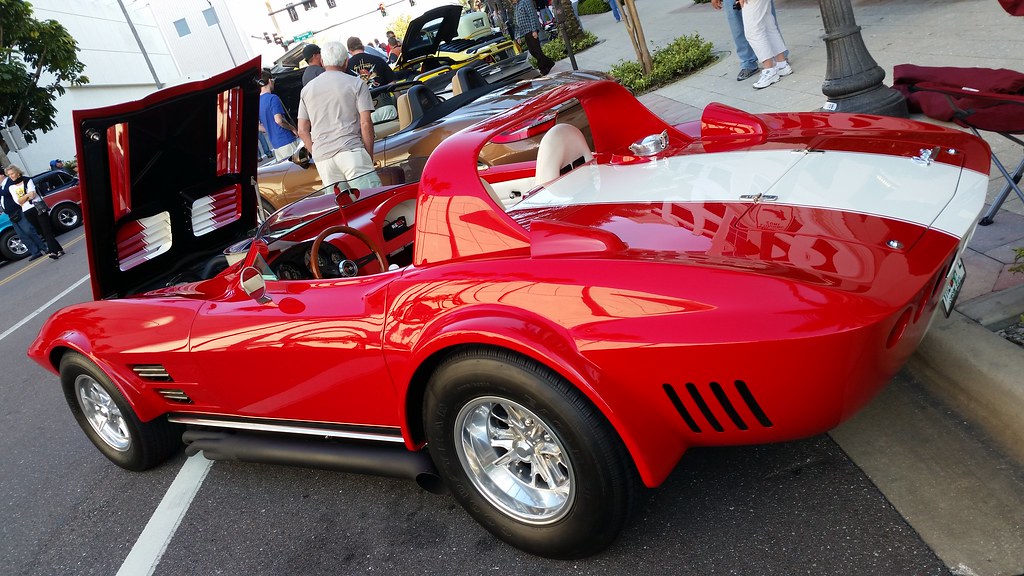
14. **2008 Corvette C6: Persistent Problems and Interior Criticisms**While the C6 generation aimed to refine the Corvette experience, the 2008 model year continued to present its own distinct set of challenges, leading it to be frequently cited as another problematic model. Despite being a few years into the C6’s production run, some critical issues persisted or emerged, impacting both performance and owner satisfaction. This year highlights that even after initial iterations, some flaws can stubbornly remain or develop anew.
Fuel pump failures became a ‘notable problem for the 2008 Corvette,’ with owners reporting instances where their fuel pumps ‘would fail without warning, causing the engine to stall or run poorly.’ This critical malfunction could occur at any speed, creating potentially dangerous situations on highways and urban roads alike. The substantial cost and inconvenience of replacing a failed fuel pump further compounded the frustration for owners, marking it as a significant reliability concern.
Moreover, the 2008 Corvette was affected by ‘Transmission Problems,’ particularly in models equipped with the automatic gearbox. Owners experienced ‘harsh shifting, delayed gear changes, and sometimes even the transmission completely failing.’ Such issues severely compromised the driving experience, turning what should have been smooth power delivery into a jarring and unpredictable ordeal. These transmission woes ultimately contributed to ‘expensive repairs,’ solidifying the 2008 model’s reputation as a year to approach with caution.

15. **2015 Corvette C7 Stingray: Great Looks, Early Recall City**The 2015 Corvette, part of the C7 generation, captivated audiences with its aggressive styling and supercar-level performance. It looked the part of a modern American supercar, pushing boundaries with its design and technology. However, early C7 models, particularly the 2015 Stingray, were quickly plagued by a series of significant issues and recalls that tarnished its otherwise brilliant debut, earning it the moniker ‘Early Recall City.’
A primary concern for this model year was its new 8-speed automatic transmission. Owners reported a litany of problems, including ‘rough shifting, hesitation, and an unpleasant driving experience.’ The transmission was particularly ‘prone to shuddering, especially when the car was at low speeds or during acceleration,’ leading to widespread dissatisfaction. This fundamental flaw required frequent service visits and, for many, detracted significantly from the C7’s otherwise stellar performance credentials.
Furthermore, the 2015 Corvette was subjected to multiple recalls, notably one related to ‘defective airbags’ that failed to deploy correctly during an accident, raising serious safety concerns. Beyond safety, early buyers also experienced a range of quality issues from ‘interior squeaks’ and ‘uncomfortable seats’ to pervasive ‘software bugs’ in its advanced infotainment systems. Even cosmetic aspects suffered, with reports of ‘premature paint chipping and peeling,’ which ‘impacted the car’s appearance and required costly repairs,’ making the 2015 C7 a beautifully designed car that struggled with fundamental reliability and build quality.
**Navigating the Minefield: Smarter Corvette Buys and What to Avoid**
Having journeyed through a comprehensive list of problematic Corvette models, it becomes clear that not every year offered the unblemished experience enthusiasts crave. These less-than-stellar offerings often share common threads, usually revolving around critical ‘Mechanical Problems’ such as chronic issues with transmissions, engines, or cooling systems, leading to constant repairs. We’ve seen how ‘Weak Performance,’ particularly during the emissions crackdowns of the ’70s and early ’80s, could strip a Corvette of its very essence, transforming it into a shadow of its powerful self. Beyond the mechanical, ‘Reliability & Safety Recalls’ for airbags, steering, and even potential electrical fires underscore dangerous design or manufacturing flaws. And sometimes, the issues are simply ‘Poor Design Choices,’ ranging from cheap interiors and paint defects to awkward handling or polarizing styling. Knowing these pitfalls is not just trivia; it is invaluable consumer-focused insight that could save thousands in potential repairs and a lot of buyer’s remorse.
For those eager to experience Corvette thrills without the constant worry, there are indeed ‘Smarter Corvette Buys: Years That Actually Deliver.’ Models such as the **1963 Corvette C2 Stingray** stand out, not just for its ‘iconic split-window coupe design,’ but also as ‘a solid performer for its time,’ holding its value exceptionally well. Towards the end of a problematic generation, the **1996 Corvette C4 Grand Sport** shines as a ‘high note to end the C4 era,’ featuring an upgraded LT4 engine and ‘improved reliability over earlier C4s.’ For modern power, the **2008 Corvette C6 with LS3 Engine** is highly recommended, as ‘Chevy had ironed out most of the early C6 bugs,’ offering ‘serious performance upgrades’ with fewer electronic gremlins. Finally, for uncompromising performance, the **2019 Corvette C7 ZR1** represents the ‘final front-engine model,’ delivering ‘supercar-level speed’ and proving more reliable than expected for such a powerful machine, solidifying its status as a modern classic and arguably the ‘most reliable year for the Corvette.’
**The True Cost of a Troubled Icon: Beyond the Sticker Price**
A seemingly attractive low sticker price on a problematic Corvette can be deceptive. The true ‘Cost of Owning a Bad Year Corvette’ quickly escalates, often unexpectedly, with ‘hard-to-source parts, specialty labor, and frequent shop visits.’ These models with known reliability issues don’t just consume fuel; they ‘chew through your budget’ with persistent demands for attention. It’s a critical point for any prospective buyer to understand: ‘You’re not just buying a car, you’re buying a to-do list!’ This financial burden extends beyond repairs, affecting ‘Insurance’ premiums, as some problematic years might not qualify for more affordable classic car coverage due to their checkered reputations. The ongoing ‘stress of tracking down parts for rare trims (like the 1980 California 305) or dealing with recurring electronic gremlins’ can transform what was intended as a ‘fun weekend car’ into a demanding, ‘full-time job.’ Unless one is prepared to handle repairs personally or has a dedicated Corvette specialist, investing in these problematic years ‘is rarely worth the hassle,’ as a slightly higher upfront investment in a more reliable model often yields fewer surprises and greater long-term satisfaction.
**Restoring the Underdogs: A Labor of Love, Not Profit**
For some, the idea of ‘Restoring a “Bad Year” Corvette’ holds an irresistible appeal. However, it’s crucial to approach such projects with clear, realistic expectations. As the context advises, these are ‘not weekend projects’; they demand ‘time, money, and the kind of patience most people run out of halfway through sourcing a rare part like a Cross-Fire Injection unit or a replacement digital dash from the ’80s.’ While immensely satisfying for personal gratification and nostalgia, such endeavors are rarely ‘a profitable flip.’ The vibrant ‘community of Corvette enthusiasts,’ with its forums, salvage yards, and specialty shops, can be a lifeline for those committed to bringing these ‘underdogs’ back to life. But the emphasis remains clear: ‘this is a labor of love, not a profitable flip.’ Unless the vehicle possesses exceptional collector appeal or a compelling backstory, the financial return on such an investment is unlikely to cover the extensive costs. It’s a passionate pursuit, but one where passion must not ‘write checks your bank account can’t cash.’
**Expert Insights for Savvy Corvette Ownership**
To truly navigate the complexities of Corvette ownership, especially when considering models with known issues, expert advice is indispensable. As Jim Marquez, a veteran mechanic and Corvette club regular, aptly states, ‘No car is perfect. But if you know what you’re getting into, even the rough years can be enjoyable. Just don’t go in blind.’ This sentiment underscores the importance of thorough research and tapping into collective wisdom. For instance, those looking to avoid a particularly problematic C7 should ‘Avoid the 2015 C7 Corvette due to reported issues with the 8-speed automatic transmission, electrical glitches, and premature interior wear.’ Similarly, for the C4 generation, the ‘1984 model had reliability and performance issues due to its early C4 redesign.’ These are insights gained from direct experience, far more valuable than any sales pitch.
The true ‘real knowledge lives’ within ‘Forums, owner groups, and local Corvette clubs,’ rather than in dealership ads. These communities are vital resources where enthusiasts share lived experiences, providing invaluable guidance on what ‘red flags’ to look for, such as ‘faulty electronics, premature transmission failure, poor interior quality, and engine reliability issues.’ For the ‘worst’ Corvette years, ‘Common trouble years like 1984, 2008, and 2015 show patterns of rough shifting, sensor malfunctions, and rapid wear on interior components,’ making a ‘thorough inspection critical before purchase.’ Learning from these voices ensures a more informed decision-making process, whether one is buying, restoring, or simply cherishing a Corvette.
**Final Thoughts: Buying Smart and Driving Happy**
The Chevrolet Corvette stands as an enduring symbol of American automotive prowess, a machine that has evolved over seven decades to embody speed, style, and engineering ambition. While its journey has seen many triumphs, it has also navigated periods of significant challenge, leading to certain models that, while part of its rich tapestry, are best approached with a discerning eye. The goal isn’t to diminish the icon, but to empower you with the knowledge to make smart choices.
Whether your heart yearns for the nostalgic charm of an early model, the raw driving thrills of a modern powerhouse, or the calculated potential of a long-term investment, careful research is your most powerful tool. Embrace the wisdom of the vast and passionate Corvette community; their experiences are a treasure trove of insight. For in the end, a well-chosen, well-maintained Corvette – be it a pristine ZR1, a C5 with a few endearing quirks, or a lovingly resurrected underdog – will always command attention, deliver joy on the open road, and most importantly, turn heads with that undeniable, roaring American spirit.



